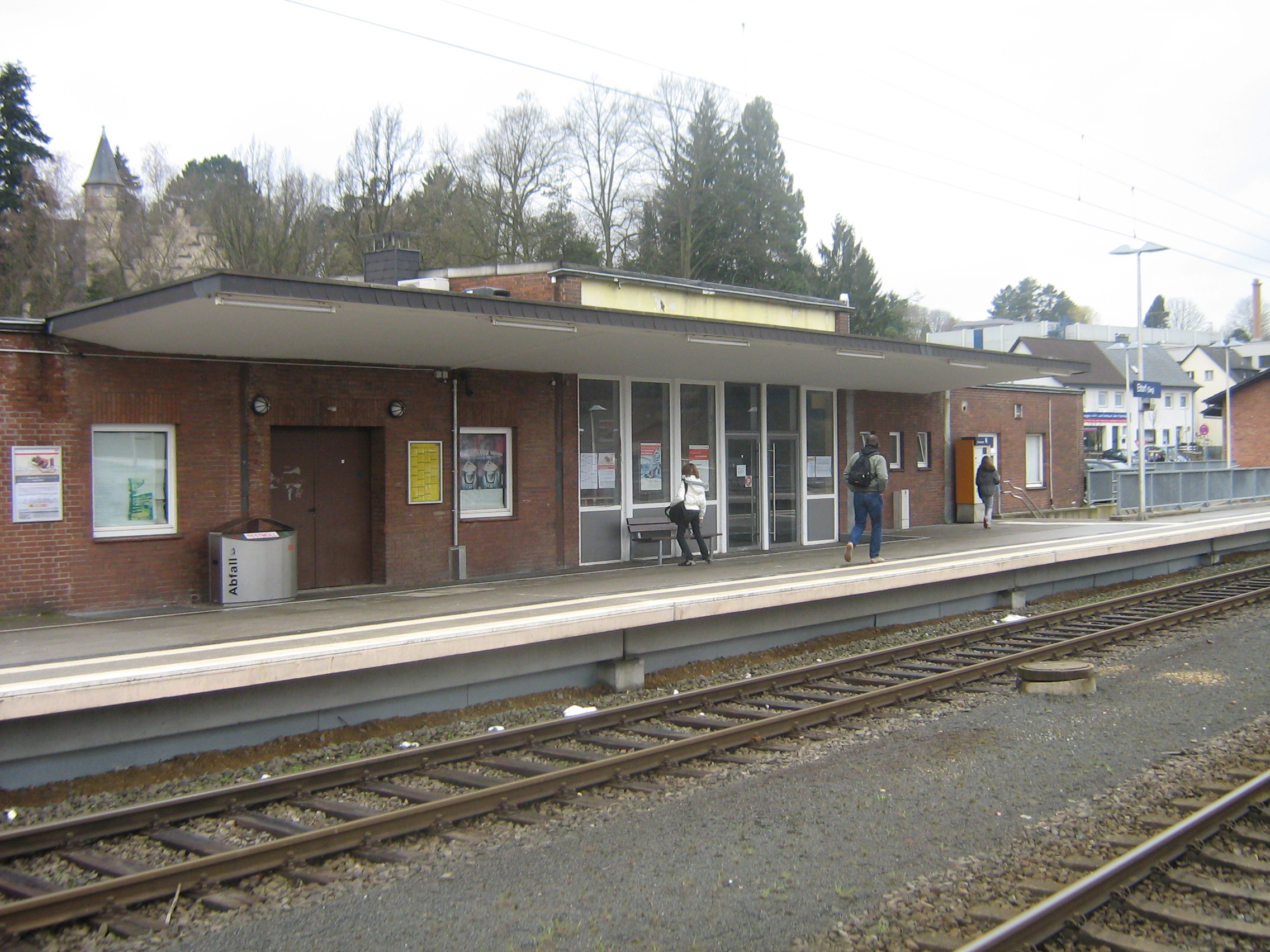|
Eitorf Station
Eitorf station is located on the Sieg Railway in the town of Eitorf in the German state of North Rhine-Westphalia. It was opened in 1859 by the Cologne-Minden Railway Company with the Sieg Railway and served passenger and freight traffic. Station building The original station building opened in 1859 was destroyed in World War II. The current station building was opened by Deutsche Bundesbahn in 1962. The building stood empty for several years and in the meantime could not be used by passengers. Since February 2009, a bakery outlet has occupied the former ticket hall. Next to the station there is a parking station and a parking lot for park and ride commuters. Platforms Until spring 2004, the station had a platform next to the entrance building and a platform between tracks 1 and 2, which could only be reached at ground level over track 1. Therefore, only one train at a time was allowed to stop at Eitorf and to prevent two trains crossing at the station, one train had to wait ... [...More Info...] [...Related Items...] OR: [Wikipedia] [Google] [Baidu] |
Eitorf
Eitorf is a municipality in the Rhein-Sieg district, in North Rhine-Westphalia, Germany. It is situated on the river Sieg, approx. 25 km east of Bonn city. History Early History The area encompassing Eitorf was originally inhabited by the Sicambri, who were ultimately almost completely annihilated by the Romans. The area belonged to the unoccupied german settlement region ''Germania Libera.'' Afterwards, the Ripuarian Franks emerged from the Tenkterer and other Frankish people in the region and would go on to have a lengthy and complex relationship with the Romans – first as their opponents, then their vassals, and finally their heirs in ruling over all of France and Germany. The names of Frankish settlements from the time frequently have an -ingen ending, of which Köttingen is the only remaining local example. Upon the splitting of the Frankish Kingdom under Charlemagne, the area belonged first to the Kingdom of Louis the German and later to the Duchy of Lorraine. Under ... [...More Info...] [...Related Items...] OR: [Wikipedia] [Google] [Baidu] |
